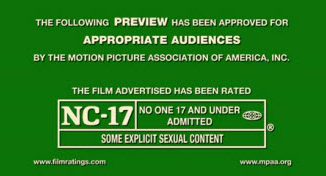
David Anderson, Staff Writer |
Elvis Presley first appeared on the Ed Sullivan Show on October 28, 1956, performing his version of “Hound Dog,” a song written by Jerry Leiber and Mike Stoller and originally performed by Willie Mae “Big Mama” Thornton. The Mississippi native quickly became a symbol of sex and youthful debauchery with his iconic hip thrusting and lip wiggling. The fact that he was performing blues and R&B songs like “Hound Dog” didn’t help either. As far as sexual content, Presley’s hit is tame compared to other blues songs of the time and almost immaculate when compared to contemporary sexual themes in pop music. Nevertheless the innuendos are there, and combined with Elvis’ hip thrusting (an admitted nervous tick) and swagger, this performance was seen as an all out rebellion against common decency.
However, while Elvis and rock music became synonymous with sexual indecency, the man and his genre paled in comparison to the blues songs they drew their inspiration from. Sexuality, and to a lesser extent, sexual violence, were far bolder in the music of the black blues artist of the time. While “Hound Dog” only hints at sexuality, songs like “I Ain’t Gonna Give Nobody None of My Jellyroll” (written by Clarence Williams, made famous by Sweet Emma Barrett, and later covered by Bobby Darin) and “What’s That Smells Like Fish” by Blind Boy Fuller discusses all the trials and tribulations of intimate life as frankly and as comically as one could in the time period.
When asked about sexual innuendos in American music, Jazz History professor Dr. Art Falbush stated, “Men and women have always spoken frankly about their relations behind closed doors. However, when commerce is involved, when there is a record that needs to be sold, the content has to be made sellable to the general public and made to fit the norms of the time period.” The white American public has always been able to tolerate sexual themes to some extent in popular music, however, if the confines with which it can be discussed are pushed, artists such as Elvis Presley are scandalized.
Dr. Falbush went on to describe the pivotal American figure Louis Armstrong who, like Presley, discussed sexual themes in his music. “Louis Armstrong began singing traditional New Orleans tunes before eventually drawing from the American Songbook to appeal more to a white audience. Regarding the early New Orleans songs, there were tons of innuendos. He recorded songs like ‘Georgia Grind’… ‘I can shake it East/I can shake it West/But way down South is where I shake it best.’ So it’s totally trite and sexual but always subdued.” These lyrics are just as scandalous, if not more so than the lyrics to “Hound Dog.” But because Armstrong’s initial recordings were largely marketed exclusively for a black audience, he was able to include sexual themes within a greater margin than Presley.
While no other rockers garnered quite the divisive attention that Presley did, a litany of white rock and rollers followed the formula of playing the sexually-charged blues music of poor black Americans. Eric Clapton became famous for electrifying the blues of Robert Johnson, an artist whose lyrics contain all the sexual themes of Willie Mae Thornton and Blind Boy Fuller, but with an additional dose of sexual violence. In “32-20 Blues,” Johnson sings “If I send for my baby, and she don’t come/All the doctors in Hot Springs sure can’t help her none I’m gonna shoot my pistol, gonna shoot my gatling gun/You made me love you, now your man have come.” Clapton didn’t cover this song until much later in his career. He instead began covering some of Johnson’s far less deviant songs, a performance choice largely responsible for the comparative lack of controversy around Clapton and his music. In a manner similar to Elvis, Clapton began his career performing blues songs that were just tame enough for the white American public to stomach while the far more blatant blues artists remained below the radar.
The history of American popular music and its sexual innuendos ultimately follows the trends set by disenfranchised black artists. In the case of the early days of rock and roll, blues artists set musical standards guided by heavily sexual lyrics (for the time period) which were then watered down for the white American public. In Elvis’ case, he overstepped the line with his physical gestures, but while controversy regarding his dancing raged, most blues artists performed their sexually blatant music well out of the spotlight.

Presley did not appear on the Ed Sullivan Show for the first time on October 28, 1956. That night, he ONLY (LOL) heedp Sullivan get a 37.5 rating and a 57.6 % share, all of wehich translated into 55 million tuning in. Rewind to 9 September, same year. That was the Elvis, first historic performance, garnering for Sullivan, as he did, a 43.7 rating an 82.6 % share and a 60 million audience. That alone made it possible for CBS and the oither two networks to within the next two weeks raise their price for an ad at primetime, in the most coveted spot, the one on Sunday at 8-9 ET, from US$90,000 to US$250,000 a minute.